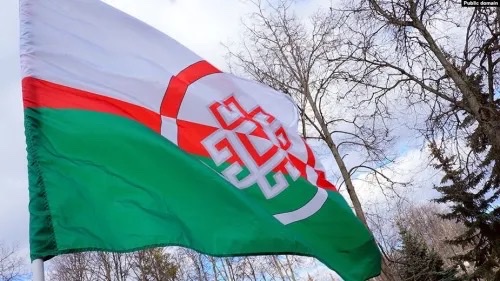Finno-Ugric Maris have Long Looked to Estonia, Finland and Hungary – and Moscow Doesn’t Like It
The roughly 600,000 Maris, a Finno-Ugric nation in the Middle Volga, have long looked to the larger and now independent Finno-Ugric nations of Estonia, Finland, and Hungary for inspiration and support. Their interest has been reciprocated – and Moscow doesn’t like it.

Last week, Hungary’s consul general in Kazan visited Ioshkar-Olga, the capital of Mari El, and proposed holding a Hungarian film festival for his fellow Finno-Ugrics there (idelreal.org/a/29275876.html). Whether that will happen remains to be seen, given Moscow’s opposition; but it has called attention to links between nations in this language community.
To put this event in context, Dmitry Lyubimov in an extraordinarily useful article for Radio Liberty’s IdelReal portal has provided a detailed history of contacts between the Maris and the three now-independent Finno-Ugric nations as well as the reaction of the Soviet and now Russian governments (idelreal.org/a/29283225.html).
Finnish and Hungarian scholars first made contact with the Maris in the 19th century; but already in the mid-1920s, the Soviet authorities sought to shut down these contacts, setting the stage for attacks on all Finno-Ugric cooperation almost like those launched against Pan-Turkism and for charges that various Mari figures were “Finnish spies.”
In the 1970s, however, it became possible for some contacts to resume with Hungary, presumably because that country was part of the Soviet bloc. Contacts with Estonia, then occupied by Moscow, were possible as well; but anything having to do with Finland remained almost impossible.
After the collapse of the USSR, there was a flurry of contacts between the Maris and the three Finno-Ugric countries, including visits by their ambassadors, talks about trade, and cultural and educational exchange. But that began to end in 2000 following the appointment of Leonid Markelov as head of the republic.
Jaak Prozes, an Estonian expert on the Finno-Ugric peoples of the Russian Federation, argues that Moscow has tried out policies in Mari El that it has later extended to other non-Russian nations. For example, Markelov made the study of Mari voluntary in 2000 thus presaging Putin’s current push by 18 years (inosmi.ru/russia/20100623/160791328.html).
Markelov also took the lead in dividing the national movement by creating pro-government groups to oppose more independent and popular ones and by attacking members of the latter, often with violence. His moves in that regard in 2005 were denounced by Finno-Ugric countries and the European Parliament as well.
The Russian foreign ministry dismissed these criticisms as inappropriate and the Russian Duma followed suit, Lyubimov says. And Moscow together with Markelov did what it could to ensure that the Maris did not know how much support they had. The local media was silent about the controversy, and because the Internet had not developed there, few knew about it.
In the 1990s, the Hungarian ambassador to Moscow visited Mari El four times, the Finnish ambassador and the Estonian ambassador once each. Then, in the first years of this century, they came as a group in 2002 and 2005, as well as individually, with the Hungarian diplomat coming six times, the Finnish four, and the Estonian three.
But since 2011, no Finno-Ugric country ambassador has come to Mari El. At best, the republic has been visited by consul generals from Kazan or lower-ranking diplomats from the Moscow embassies. There have been some economic and cultural contacts; but those too appear to being frozen out.
At least, when these do occur, the government media in Mari El even under Markelov’s successor have done what they could to downplay or even completely ignore them.
Paul Goble
Friday, June 15, 2018
http://windowoneurasia2.blogspot.com



